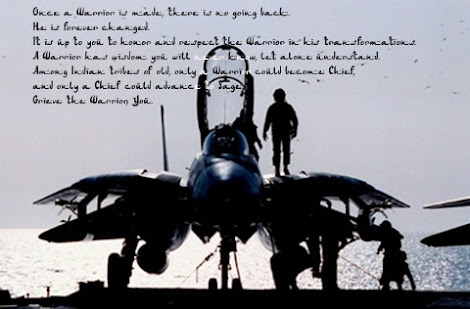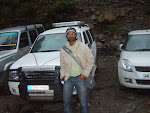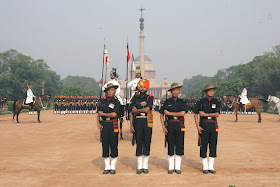Arundhati Roy's comments has brought out one important question on the general awareness about the whole kashmir problem.There's a gross misunderstanding and confusion on why the conflict happened and how the events unfolded which gave birth to present situation. It is definitely a sensitive issue and people commenting on this issue should be aware about all the aspects.
MSN published this article which is worth a read. This article is written by E Jayakrishnan
here it is..
********************************************************
Arundhati Roy says Kashmir was never a part of India. We look at why she is wrong & why India’s position is not as vulnerable as it is portrayed to be
MSN published this article which is worth a read. This article is written by E Jayakrishnan
here it is..
********************************************************
Arundhati Roy says Kashmir was never a part of India. We look at why she is wrong & why India’s position is not as vulnerable as it is portrayed to be
Myth-I
"Kashmir has never been an integral part of India": Arundhati Roy
The story
At the time of Indian independence, none of the princely states - Hyderabad, Gwalior, Mysore, Baroda and Kashmir, to name a few - were part of India. They were called princely states - quasi-sovereign states ruled by the Indian princes under the "suzerainty" of the British. There were as many as 568 states in India when the British decided to leave India.
In 1947, under the Mountbatten Plan, they were given two options - either India or Pakistan. Though most of the Princely states thirsted for freedom, that option was closed at the insistence of the Congress party. Though the choice of which entity to join was left to the rulers of the Princely states it was largely understood that religious denomination of the majority of the citizens and geographical contiguities of the states will be preponderant determining criteria.
Kashmir fulfilled both these paramount criteria to join Pakistan - geographical contiguity with the newly-formed state and religious domination of the majority of its citizens.
However, there was a problem. The Hindu ruler of Kashmir Maharaja Hari Singh wanted something which was not on the table, namely azadi, or freedom from both India and Pakistan - to remain independent. In spite of entreaties from various quarters including from the Governor General of India Loius Mountbatten, the Maharaja continued to dither and be non-committal. The situation reached a stalemate.
Jinnah and Pakistan perceived the intransigence of the Maharaja as a clever ploy of the India and Mountbatten to pluck Kashmir surreptiously from Pakistan's grasp. So in an operation that today can be seen as a precursor of the Kargil Operation, Pakistan launched a military invasion of Kashmir on October 22, 1947.
Pashtun tribals and irregulars, morally and logistically supported by the Pakistan army, were sent in to force the Maharaja to accede to Pakistan. The invaders reached the outskirts of Srinagar, the capital. And were threatening to besiege the city.
A frightened and panicky Maharaja radioed Delhi for military help. The Indian leadership argued that it not be legally possible to send in the Indian army unless Kashmir acceded to India formally. After another bout of resistance, the Maharaja finally yielded and Mountbatten's aide V P Menon was sent to Srinagar to secure his signature on the Instrument of Accession. Once signed (on 26 October 1947) the Indian army was airlifted to Srinagar and beat back the Pakistani invaders, but not before they controlled about one-third of Kashmir.
The Reality:
As soon as the Maharaja signed the Instrument of Accession, Kashmir's accession to India was complete in the legal and formal sense - the same Instrument of Accession that was signed by more than 500 other princely states. That is a fact of history, which cannot be disputed without stretching the truth. It's there is black and white. In fact, it can be argued that it was Pakistan's folly of invading Kashmir to usurp it, overplaying its hand, which sowed the seeds for the Kashmir imbroglio.
Myth-II
India refuses to hold the UN-mandated plebiscite to give the right of self-determination to the Kashmiri people.
The story
When the irregulars from Pakistan invaded India on October 22, 1947, Prime Minister Nehru went to the UN in good faith to call on the world body to intervene and ensure that Pakistan pull back its troops. Based on the Indian complaint and the counter-arguments of Pakistan, the UN Security Council called for not only an immediate ceasefire, but also a plebiscite to determine the wishes of the Kashmiris.
Ignoring the advice of his Home Minister Sardar Patel and the army commanders that India should not agree to a ceasefire before the area captured by the invaders are reclaimed, Nehru went ahead and not only ordered an immediate ceasefire but also agreed in principle to the plebiscite. A promise that has not been kept.
The reality
This is the instance used to castigate India for not only breaking the spirit of the UN resolutions but also ignoring the legitimate aspirations of the Kashmiri people.
But just look at what UN Resolution 38 of 17 January 1948 actually says about the run-up to the plebiscite--
"The Government of Pakistan should undertake to use its best endeavours: To secure the withdrawal from the State of Jammu and Kashmir of tribesmen and Pakistani nationals not normally resident therein who have entered the State for the purposes of fighting, and to prevent any intrusion into the State of such elements and any furnishing of material aid to those fighting in the State".
Please read that again.
The much-bandied resolution used to whip India with, by the critics clearly states that Pakistan will "withdraw" all "Pakistani nationals" and "tribesmen" who infiltrated on October 22, 1947 from the soil of the whole of Jammu and Kashmir as it existed then, without exception. This was the UN resolution's 'first condition' for the beginning of the process towards the plebiscite.
Has that condition been fulfilled by Pakistan? Has the land 'occupied' by the Pakistanis and the tribesmen in 1947 been vacated? Isn't the reality that Pakistan occupied and continues to occupy more than one-third of the territory of Kashmir.
As a way to fulfill the mandate and hold the plebiscite, will Pakistan be willing to vacate PoK now; 63 years after the resolution? The answer is written on the wall.
For all intents and purposes the UN resolution on Kashmir is as good as dead.
No wonder then that the wily but pragmatic General Musharraf gave up the usual Pakistani harping on self-determination in Kashmir for a more practical and doable out-of-the-box solution, which unfortunately is being disowned by the present Pakistani government.
Myth-III
Pakistan has always stood by Kashmir, as against the brutality of the Indian security forces in the Indian side of Kashmir
Pakistan in Kashmir
a) Pakistan has carved out the Northern Areas (now called Gilgit-Baltistan, almost 72,971 Sq km) from Kashmir into a separate administrative and political unit. This area which was part of the undivided Kashmir at the time of Pakistan, has been 'annexed' by Pakistan as it where and separated from Kashmir.
b) In 1963, Pakistan illegally ceded 5,800 sq km in the Trans-Karakoram Tract to China. The Tract was part of the original state of Jammu and Kashmir.
c) Pakistan actively encourages "other people" to settle in PoK and have even allowed the Chinese a huge presence in Gilgit-Baltistan, ostensibly for developing the infrastructure of the region.
In contrast:
a) Territorially the Indian state of Jammu and Kashmir is the same entity that existed in 1947, except for the portions gobbled-up by Pakistan/China.
b) The Freedom House Report, 2010, on the level of 'freedom' in PoK characterised it as "not free', while the Indian side of Kashmir was defined as "partly free".
d) No non-Kashmiri can buy as much as an inch of land in the state of Jammu & Kashmir. There has been no attempt by India to change the demographics or the state's ethnic character. The only demographic change that has happened in the state has been the "ethnic cleansing" of the Kashmiri pundits from the Valley. A mass exodus which has largely been ignored by the media and the powers-that-be.
Therefore, there is nothing much really that India has to feel defensive about. Whatever Arundhati Roy or others may put out.




















